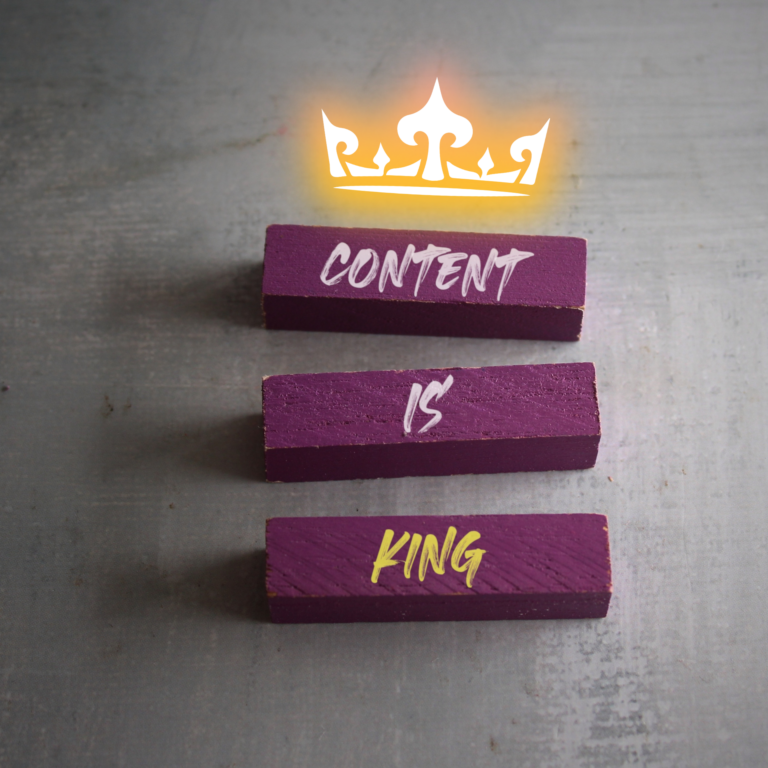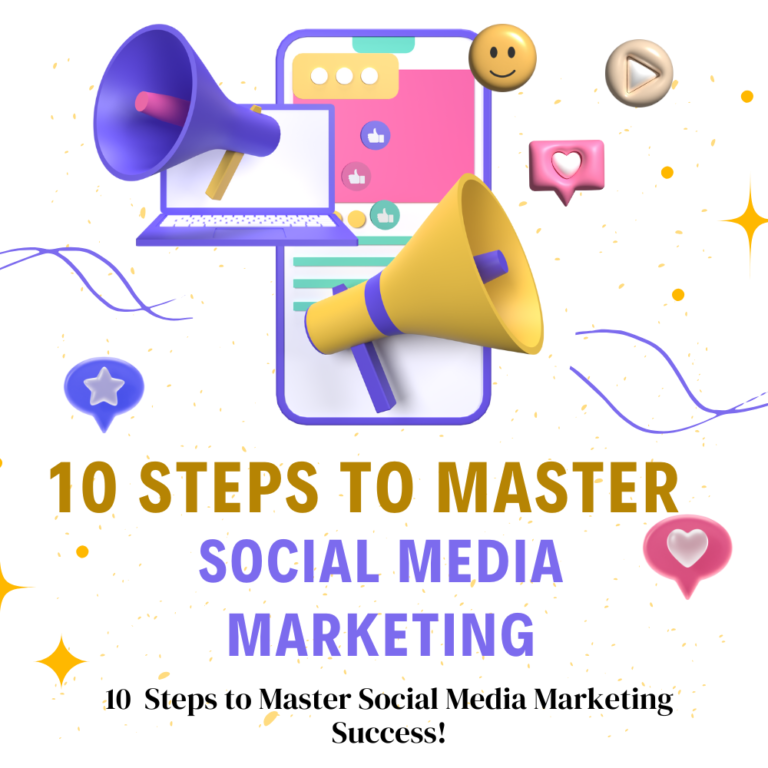Mastering PPC Advertising for Small Businesses
Introduction
In an era where the digital marketplace is bustling with competition, PPC (pay-per-click) advertising offers Indian businesses a fast and efficient way to reach their target audiences.
Unlike traditional marketing methods, PPC advertising allows businesses to capture immediate interest, maximizing the potential to drive traffic, boost sales, and enhance brand awareness quickly.
Whether you’re a local business or a large enterprise, understanding and leveraging PPC can be a game-changer.
In this comprehensive PPC guide, we’ll cover the fundamentals of PPC advertising, explain how it works, examine why it’s essential for Indian businesses, and outline steps to get started.
By the end of this segment, you’ll have a solid foundation to launch successful PPC campaigns made for the Indian market.
What is PPC Advertising?
Pay-per-click, commonly referred to as PPC, is a digital marketing technique where advertisers pay a fee for each click their ad receives.
Essentially, PPC allows you to “buy” visits to your website rather than waiting for organic visits to come through search engines.
PPC ads commonly appear on search engine results pages (SERPs) or social media feeds.
When users search for keywords related to your business, your ad is displayed at the top of the page, allowing you to attract attention ahead of your competitors.
The beauty of PPC advertising lies in its ability to deliver targeted exposure, ensuring you’re reaching individuals who are already interested in your offerings.
For instance, if you own a chain of fashion boutiques in Mumbai, a PPC campaign can target users in your area searching for keywords like “best cafes near me” or “top fashion boutiques in Mumbai.
This way, the audience seeing your ads is already seeking unique styles, maximizing the chance of engagement.

Why PPC Advertising is Essential for Indian Businesses
India’s digital ecosystem has been growing at a rapid pace, with millions of new users coming online every year.
For businesses, this presents an immense opportunity to reach a diverse, digital-savvy audience.
However, the digital space in India is becoming increasingly competitive, especially on popular platforms like Google and Facebook.
This makes PPC advertising a powerful tool for businesses looking to stand out.
1. Immediate Visibility: Unlike SEO, which takes time to produce results, PPC can help you gain visibility almost instantly. This is crucial for businesses looking to create immediate impact, whether it’s for a product launch, seasonal sale, or event promotion.
2. Cost-Effective: PPC is budget-friendly and offers control over ad spend. Indian businesses, especially small and medium enterprises, can set daily budgets that align with their financial capacity, ensuring they get results without exceeding their limits.
3. Localized Targeting: PPC platforms allow you to narrow down audiences by location, making it highly effective for Indian businesses targeting specific cities or regions.
For example, a clothing brand based in Delhi can limit ads to the Delhi NCR area, ensuring the marketing budget is utilized efficiently.
4. In-depth Analytics: With PPC, you can monitor every aspect of your campaign performance. Metrics like click-through rate (CTR), cost-per-click (CPC), and conversion rates provide insights into campaign success, allowing you to adjust strategy in real time.
5. Support for Ads in Multiple Languages: India has many languages, and PPC ads can be created in various languages to connect with regional customers.
Ads in Tamil for Tamil Nadu or in Bengali for West Bengal feel more familiar and help build trust with local audiences.
6. Valuable Insights for Smarter Decisions: PPC platforms give detailed information about how ads perform, what customers like, and what works best.
Indian businesses can use these insights to make smart choices about what products to promote, how to adjust ads, and even how to improve customer service.
7. Effective for India’s Mobile Users: India has over 650 million smartphone users, making it a mobile-first country. PPC ads are optimized for mobile, so businesses can reach customers right on their phones.
This helps businesses connect with customers wherever they are, whether shopping or scrolling on their mobile devices..
How PPC Works: Key Platforms and Their Mechanisms
Several platforms support PPC advertising, but each works a bit differently. The following platforms are commonly used in India:
1. Google Ads
Google Ads is one of the most popular PPC advertising platforms globally, including in India. It displays ads on Google’s SERP and partner sites within its Display Network.
When you use Google Ads, you bid on keywords relevant to your business, and Google uses an auction system to determine which ads appear.
Factors influencing ad placement on Google include:
Bid Amount: The highest price you’re prepared to pay for each click on your ad.
Quality Score: Google evaluates ad relevance, keyword selection, and landing page experience to assign a Quality Score. Improved Quality Scores typically result in reduced costs per click.
2. Facebook Ads
With over 300 million users in India, Facebook provides a solid platform for reaching diverse demographics.
Facebook’s PPC model doesn’t focus on keyword bidding; instead, ads are targeted based on demographics, interests, and online behavior.
This makes it ideal for businesses that need to reach specific segments, such as young adults interested in fashion, parents of school-age children, or professionals in finance.
3. Instagram Ads
Instagram, a subsidiary of Facebook, is highly popular among younger audiences in India.
Instagram Ads leverage visual content and offer excellent targeting options similar to Facebook.
For lifestyle brands, clothing, travel, and wellness products, Instagram Ads can create visual stories that captivate and engage users effectively.

4. LinkedIn Ads
LinkedIn Ads are primarily used by B2B (business-to-business) companies to target professionals.
Although LinkedIn’s user base is smaller than other platforms, its PPC ads can be valuable for reaching specific industries or roles, such as IT professionals in Bangalore or marketing managers in Delhi.
5. Amazon Ads
For e-commerce businesses in India, Amazon Ads allows product-based advertising right on the platform.
Shoppers on Amazon are often ready to make purchases, making this an ideal PPC channel for online retailers.
Advantages of PPC Advertising for Indian Businesses
1. Cost-Effective Marketing: With PPC, you only pay for actual engagement, making it a cost-efficient option.
Small and medium-sized businesses can set daily or monthly budgets that align with their marketing plans and adjust them as necessary.
With every rupee optimized for returns, PPC advertising becomes a valuable option for businesses of all sizes.
2. Targeted Exposure: PPC advertising allows you to refine targeting options based on location, demographics, interests, and browsing behavior.
If your business operates in multiple cities, you can customize ads for each location, offering unique promotions that resonate with local audiences.
3. Instant Result: Unlike organic efforts, which take time to build momentum, PPC delivers immediate exposure and traffic.
This can be particularly useful for businesses with seasonal offerings or limited-time promotions.
Running a PPC campaign during peak festival seasons in India, such as Diwali or Holi, can maximize engagement and sales.
4. Data-Driven Insights: With PPC advertising, you have access to data that reveals what’s working and what isn’t. Metrics such as CTR, CPC, and conversion rates allow you to make informed decisions.
You can identify which keywords or visuals drive the most engagement, making it easier to refine strategies over time.
Steps to Launching a Successful PPC Campaign
1. Keyword Research
Keywords form the foundation of a PPC campaign. Effective keyword research can significantly impact ad relevance, click rates, and ROI.
Tools like Google Keyword Planner, SEMrush, and Ahrefs can help you find keywords with high search volume and manageable competition levels.
- Short-Tail Keywords: Keywords like “PPC advertising” or “digital marketing” are broad and usually more competitive.
- Long-Tail Keywords: Phrases like “PPC advertising agency in Mumbai” or “affordable digital marketing in India” are longer, more specific, and often easier to rank for.
Long-tail keywords typically have lower competition, making them highly valuable for small and medium-sized businesses looking for cost-effective options.

2. Writing Effective Ad Copy
Your ad copy should be concise, engaging, and aligned with user intent. Here’s how to create a compelling ad copy:
Highlight Benefits: Showcase unique features such as free consultations, discounts, or fast delivery.
Use a Strong CTA: Words like “Call Now,” “Book Today,” or “Shop Now” encourage immediate action.
Focus on Relevance: Ensure your ad copy is relevant to the searcher’s intent and includes primary keywords.
3. Creating Optimized Landing Pages
When users click on your ad, they should land on a page that is optimized for conversion. An ideal landing page has a clear call-to-action, relevant information, and an appealing design.
It should also load quickly, as slow-loading pages can lead to a high bounce rate.
Here are several tips for making effective landing pages:
Consistency: Ensure the landing page aligns with the ad copy and user expectations.
Simplicity: Avoid clutter. Use clear headings, bullet points, and images to highlight important information.
Mobile Optimization: Many users in India access the internet via mobile devices, so make sure the landing page is mobile-friendly.
4. Budget Allocation and Bidding
PPC platforms like Google Ads and Facebook Ads allow you to set daily or monthly budgets, giving you control over ad spend.
To get the most value, start with a small budget, test performance, and increase spending on ads that yield better results.
Consider starting with an automated bidding strategy, which uses algorithms to maximize clicks within your budget.
As you gain experience, you can shift to manual bidding for greater control over costs.

Advanced PPC Advertising Techniques
We explored the basics of PPC advertising, including how to set up successful campaigns. Now, lets dive into advanced strategies such as optimizing campaigns, using data to improve results, retargeting, and best practices to enhance ROI.
We’ll also look at how Indian businesses can use PPC for seasonal and regional marketing, making sure campaigns connect with local audiences.
Advanced PPC Optimization Techniques
Once your PPC campaign is live, optimization is crucial for maximizing its potential. Here are some effective strategies to enhance your PPC performance:
1. A/B Testing for Ad Variations A/B testing, or split testing, involves comparing two versions of an ad to see which performs better.
You can test different headlines, ad copy, CTAs, or visuals to find out what resonates with your audience.
Example: If your ad says “Explore Trendy Fashion in Mumbai,” try testing “Shop the Latest Styles in Mumbai” to see which gets more clicks.
2. Make Use of Negative Keywords: Negative keywords are effective for blocking irrelevant traffic.
By adding these keywords, you can prevent your ads from showing up for terms that don’t match your business.
Example: if you sell electronics but don’t offer repair services, you can exclude “repair” from your keywords. This is especially important in India, where regional language variations can affect keyword usage.
Using tools like Google Keyword Planner enables you to discover negative keywords.
3. Refining Location Targeting: Location targeting is vital in India, where markets vary greatly from city to city.
If you run a nationwide PPC campaign, consider tailoring your ads for different cities or states to better resonate with local audiences.
For instance, a clothing business in Delhi might highlight winter wear in December, while a Mumbai business might not need to.
You can also focus on high-value locations to maximize your budget for areas that convert well.
4. Ad Scheduling for High Engagement Times: Ad scheduling, or dayparting, allows you to show your ads during specific times when your audience is most active.
If your target audience looks for local cafés in Bengaluru around brunch hours, schedule your ads from 9 AM to 1 PM for better results.
5. Optimize Your Landing Pages for Conversions: A good PPC ad needs a high-quality landing page. Ensure that each landing page matches the ad’s message and guides users toward a clear CTA.
Here are tips for optimizing landing pages:
Match Keyword Relevance: Use keywords from your ad in the landing page content.
Enhance Page Load Speed: Fast-loading pages reduce bounce rates.
Design for Mobile: Since most internet users in India are on mobile, ensure your landing page is mobile-friendly.
Leveraging Data for Campaign Optimization
Data-driven decisions are crucial for PPC success. By analyzing campaign performance data, you can make informed adjustments to optimize your results.
1. Conversion Tracking This feature shows what happens after a user clicks your ad, whether they make a purchase or fill out a form.
Tracking conversions helps you understand which ads lead to sales and which need improvement.
Set up conversion tracking on platforms like Google Ads and Facebook Ads to measure your ROI accurately.
2. Analyzing Click-Through Rates (CTR) and Cost-Per-Click (CPC) CTR and CPC are vital metrics for evaluating ad performance:
CTR indicates how effective your ad copy is. A low CTR may mean your ad isn’t appealing to users.
CPC shows the cost-effectiveness of your campaign. If CPC is high, consider refining your targeting or keywords.
3. Assessing Quality Score on Google Ads Google’s Quality Score measures the relevance and quality of your ads, keywords, and landing pages.
A high Quality Score can lower costs and improve ad placement, so keep an eye on it and make necessary improvements.
4. Conversion Rate Optimization (CRO) This involves refining different parts of your campaign to maximize the conversion rate.
By testing different CTAs or adjusting targeting parameters, you can improve conversion rates over time.
Retargeting for Increased Engagement
Retargeting (or remarketing) is a technique that re-engages users who visited your website but didn’t convert.
With retargeting, you can show ads to these users as they browse other sites or social media.
For example, if someone looked at a product on your site but didn’t buy it, a retargeting ad could remind them of that product or offer a discount, encouraging them to come back and complete the purchase.
Retargeting is effective for:
E-commerce: Recovering abandoned carts by targeting users who added items but didn’t complete the purchase.
Service-Based Businesses: Reminding users who explored your services but didn’t sign up.
Event Promotions: Engaging users who viewed an event page.
Most PPC platforms, including Google Ads and Facebook, offer retargeting options with customizable audience settings.
Seasonal and Regional PPC Campaigns in India
India’s rich culture provides unique opportunities to use seasonal and regional events for PPC campaigns.
Festivals, cultural events, and local celebrations can be great times to connect with your audience.
1. Festival Campaigns Major festivals like Diwali, Holi, Eid, and Christmas are times of high consumer spending.
During these periods, offer special discounts, limited-time promotions, or festive products. Use festival-related keywords, like “Diwali sale” or “Holi offers.”
2. Localized Promotions What works in one region may not work in another.
For instance, a promotion centered on Pongal in Tamil Nadu will likely be more effective than one aimed at North India.
Modifying ads to regional preferences can create deeper connections with audiences.
3. Weather-Based Campaigns Adjust your campaigns based on weather conditions.
For example, during the monsoon, ads for umbrellas and raincoats would be particularly relevant in Mumbai.
Both Google and Facebook offer tools to modify ad settings based on local weather data.

Best Practices for a High-ROI PPC Campaign
To achieve a high ROI from PPC, consistent monitoring and adjustments are necessary. Here are some best practices to help:
Use Multi-Platform Strategies: Don’t rely on just one platform. Spread your PPC efforts across Google Ads, Facebook, and Instagram to ensure better visibility.
Optimize for Mobile: With most internet users in India on mobile devices, make sure your ads and landing pages are mobile-optimized.
Craft Attention-Grabbing Ad Copies: Create engaging ad copies that grab attention quickly. Highlight special offers or location-based messages to increase clicks.
Focus on Keyword Match Types: Choosing the right keyword match types (broad, phrase, or exact) can help control which searches trigger your ads. Experimenting with match types can manage costs while reaching your target audience effectively.
Maintain Regular Campaign Analysis: Regularly analyze metrics like CTR, CPC, conversion rates, and Quality Score. Regular tracking enables you to discover aspects that could be improved.
Adjust Bids Based on Performance: Start with automated bidding, but switch to manual bidding for greater control. Increase bids for high-performing keywords and cut back on low-performing ones.
Experiment with Ad Extensions: Ad extensions, such as call buttons, site links, and location information, improve ad visibility and CTR. For Indian businesses, adding location and call extensions can be particularly beneficial.
In summary, PPC is an important tool that can significantly enhance your business visibility and drive targeted traffic.
Whether you decide to implement these strategies on your own or seek professional guidance, the key is to take action. Start experimenting with PPC today or reach out to us for expert support!
Conclusion
PPC advertising is a powerful tool for Indian businesses wanting to grow their online presence quickly and effectively.
By understanding both the basics and advanced strategies—like optimization, retargeting, and seasonal campaigns—businesses can greatly improve their return on investment.
Focusing on best practices and recognizing the diverse cultural aspects of the Indian market helps in building stronger connections with customers, enhancing brand awareness and loyalty.
With PPC as a key part of your digital marketing strategy, the potential for growth and engagement is vast.
By applying these advanced techniques, you can ensure that your PPC efforts deliver impressive results for your business.








One Comment